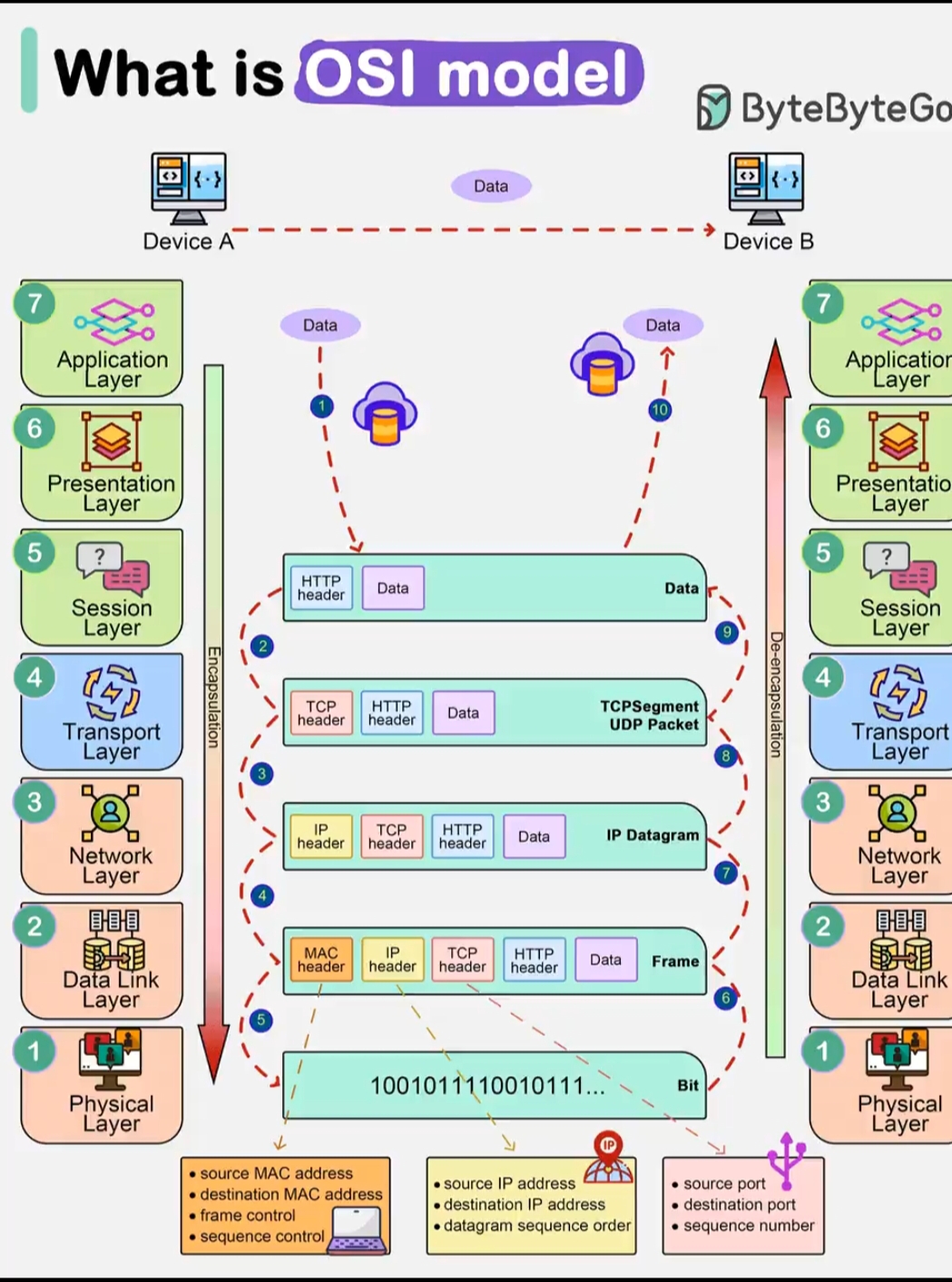OSI Model Explained
 Shubham Raj
Shubham RajTable of contents

How is data sent over the internet? What does that have to do with the OSI model? How does TCP/IP fit into this?
Data is sent over the internet through a layered approach, and the OSI (Open Systems Interconnection) model is a conceptual framework that helps understand this process. The OSI model consists of seven layers:
1. Physical Layer: This layer deals with the physical connection between devices and covers aspects like cables, connectors, and transmission rates.
2. Data Link Layer: Responsible for creating a reliable link between two directly connected nodes, dealing with issues like framing, addressing, and error detection.
3. Network Layer: Manages the routing of data between devices on different networks. IP (Internet Protocol) operates at this layer, providing logical addressing.
4. Transport Layer: Ensures end-to-end communication, handling issues like flow control, error correction, and segmentation of data. TCP (Transmission Control Protocol) and UDP (User Datagram Protocol) operate at this layer.
5. Session Layer: Manages sessions or connections between applications, allowing them to establish, maintain, and terminate communication.
6. Presentation Layer: Deals with the syntax and semantics of the information exchanged between systems, translating data formats if necessary.
7. Application Layer: Provides network services directly to end-users, interacting with software applications.
TCP/IP (Transmission Control Protocol/Internet Protocol) is a protocol suite that is widely used for internet communication. It doesn't perfectly align with the OSI model, but its functionalities can be related:
Link Layer: Combines elements of both OSI's Physical and Data Link layers.
Internet Layer: Corresponds to OSI's Network Layer and is primarily concerned with IP addressing and routing.
Transport Layer: Encompasses functionalities of the OSI Transport Layer, providing reliable communication through TCP or connectionless communication through UDP.
Application Layer: Combines aspects of OSI's Session, Presentation, and Application layers, handling end-user communication.
In summary, the OSI model provides a conceptual framework, and TCP/IP is a practical implementation widely used for internet communication, incorporating functionalities of multiple OSI layers. The layers help in organizing and understanding the various tasks involved in transmitting data over a network.
#NetworkingBasics #OSIModel #TCP #IPProtocol #InternetCommunication #TechExplained #NetworkingLayers #DataTransmission
Subscribe to my newsletter
Read articles from Shubham Raj directly inside your inbox. Subscribe to the newsletter, and don't miss out.
Written by
